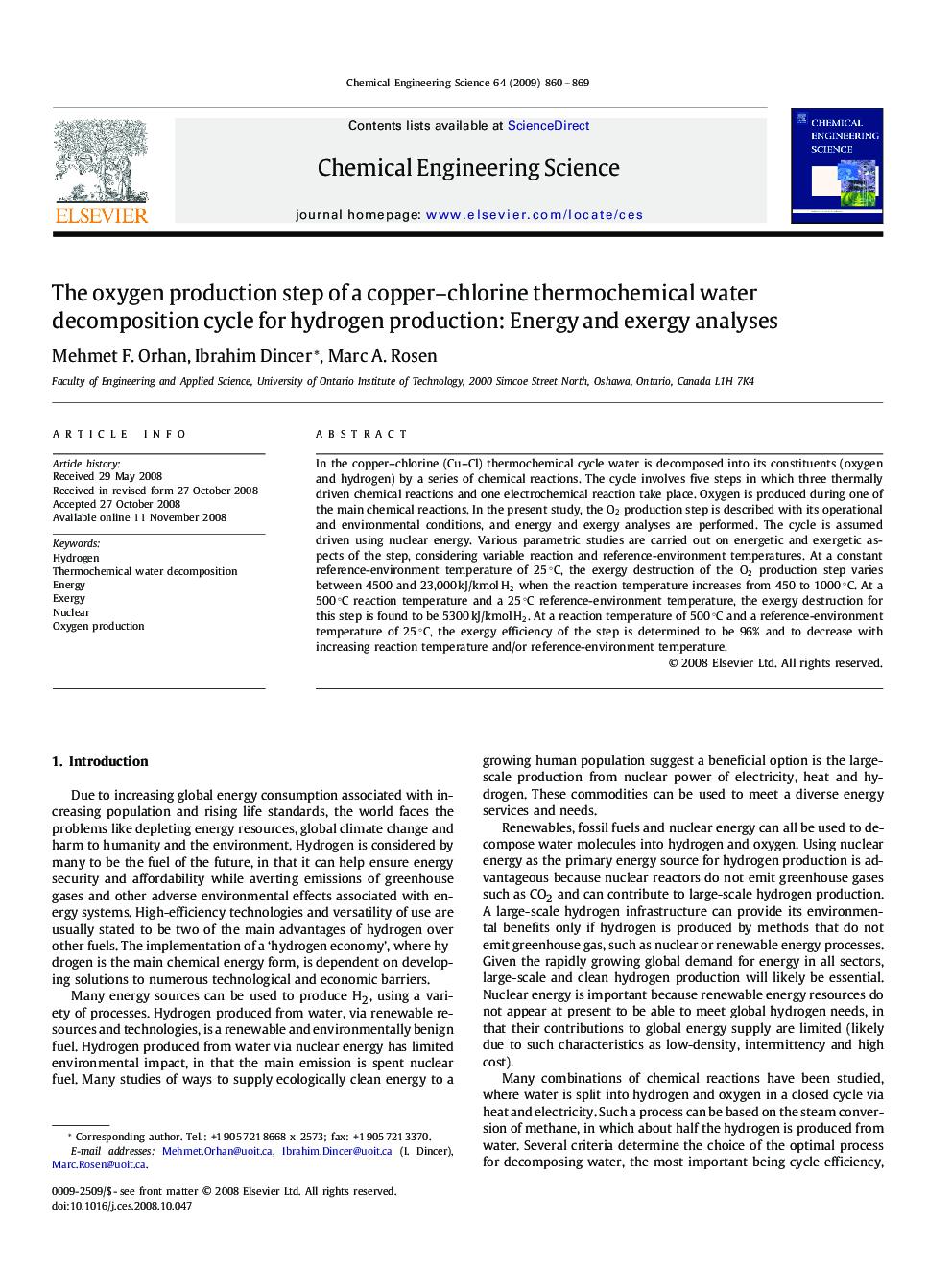| Article ID | Journal | Published Year | Pages | File Type |
|---|---|---|---|---|
| 157630 | Chemical Engineering Science | 2009 | 10 Pages |
In the copper–chlorine (Cu–Cl) thermochemical cycle water is decomposed into its constituents (oxygen and hydrogen) by a series of chemical reactions. The cycle involves five steps in which three thermally driven chemical reactions and one electrochemical reaction take place. Oxygen is produced during one of the main chemical reactions. In the present study, the O2 production step is described with its operational and environmental conditions, and energy and exergy analyses are performed. The cycle is assumed driven using nuclear energy. Various parametric studies are carried out on energetic and exergetic aspects of the step, considering variable reaction and reference-environment temperatures. At a constant reference-environment temperature of 25 °C, the exergy destruction of the O2 production step varies between 4500 and 23,000 kJ/kmol H2 when the reaction temperature increases from 450 to 1000 °C. At a 500 °C reaction temperature and a 25 °C reference-environment temperature, the exergy destruction for this step is found to be 5300 kJ/kmol H2. At a reaction temperature of 500 °C and a reference-environment temperature of 25 °C, the exergy efficiency of the step is determined to be 96% and to decrease with increasing reaction temperature and/or reference-environment temperature.
